#new peoples army npa
Text
The A-29B Super Tucano Aircraft of the Philippine Air Force (PAF) seems to be operating on a Buddy System, sharing one Electro-Optical/Forward Looking Infra-Red (EO/FLIR) “Ball” for every two Aircraft while the Armed Forces of the Philippines (AFP) used their newest Assets like the Super Tucanos, Autonomous Truck Mounted-howitzer System (ATMOS) and Hermes Drones to make a devastating strike against the New People's Army (NPA) even under the cover of Darkness
#a29b super tucano#philippine air force paf#electro optical eo#forward looking infra red flir#armed forces of the philippines afp#autonomous truck mounted howitzer system atmos#hermes 450#hermes 900#edwin andrews air base#zamboanga city#western mindanao command wescom#buddy system#new peoples army npa#malaybalay#bukidnon#philippine army pa#3rd howitzer platoon#alpha battery#4th field artillery battalion#strike from afar#8th infantry battalion#1st special forces battalion#88th infantry battalion
0 notes
Text
A transwoman in the people’s army

For more than a year now, Ka Daisy, a transwoman, has served as full-time Red fighter. She joined the New People’s Army (NPA) during the pandemic, three years after doing revolutionary work as a member of the Kabataang Makabayan. She recounted how her unit got engaged in an armed encounter on her second day in the unit.
Ka Daisy, also called “Inday” by some comrades, now serves as a squad political guide. As an official, she ensures the strengthening of the organization. She helps outline plans and programs, and ensures its implementation. She also performs daily technical tasks such as fetching water, cooking, and transporting supply.
“I have total respect for Ka Daisy,” said Ka Alas, her squad leader. “Apart from being helpful, she teaches well. Since her deployment here, she took to teaching me LitNum (literacy/numeracy). Because I’m quite past my prime, I sometimes forget our lessons, but Inday keeps encouraging me to learn.”
Ka Daisy was warmly received by comrades as a new recruit. On her part, she was able to quickly adapt to the NPA’s military regulations.
“Even before I joined the unit, comrades were oriented about my gender. They had study meetings about the LGBT struggle,” said Ka Daisy. In her unit, instructors include the LGBT orientation when giving basic military orientation. This aims to correct wrong views and treatment of LGBTs. Some misconceptions still manifest, but these are collectively struggled in a structured and comradely manner.
Like other comrades, Ka Daisy carries a heavy pack. Her bag contains printed reading materials such as Ang Bayan and other documents and books, kitchen materials, supplies and gadgets. Thrown in the mix is her make-up kit.
“Whenever we undertake mass work, we distribute documents like AB to update the masses on important social issues,” she said.
If asked how many women are in the unit, comrades would include Ka Daisy. It was a far cry from her experiences when she was still studying in a Catholic school. She experienced restrictions and gender-based discrimination. She was prohibited to wear the clothes she prefer and had to cut her long hair short.
Within the NPA, Ka Daisy is happy to be part of forging a society that has compassion and concern for transwomen like her. For her, gender is a non-issue for one to wage revolution. It is not a hindrance nor is it a basic question. It is not a matter of competing. It is enough for one to dedicate one’s heart and time to serve the revolution.
“As an LGBT youth, our role is important in advancing the revolution. To change society’s perception, we need to transform society itself,” she added.
In waging revolution, Ka Daisy can freely express her true feelings. During the 50th anniversary of the National Democratic Front of the Philippines, she led celebrations in the guerilla front. She served as a facilitator of the program and decorated the venue. She was also one of the instructors for the dance and song cultural performances. Because of the special nature of the occasion, Ka Daisy put on some lipstick, face powder and eyeliner.
Hundreds of peasants from nearby barrios graced the occasion.
In the area of responsibility of Ka Daisy’s unit, there are a few LGBT members who belong to basic Party organs in the barrio. They actively took part in cultural performances and were open to socialize with the Red fighters.
Ka Daisy was so surprised to find someone like her, an LGBT, who is also a Red fighter.
“I have long known that the NPA accepts LGBT people like me. I am delighted finally to have met someone who came from the community. I thought I was alone here,” she jokingly said.
Indeed everyone has equal rights and responsibilities in the movement. In a society that oppresses and judges LGBT people, it is only in the revolution that they can experience genuine freedom to be themselves.
#original art#my art#lgbtq#pride 2023#transgender#trans woman#npa#people's army#new people's army#Ka Daisy
3 notes
·
View notes
Text
LA Times: Philippine Vigilantes Reflect U.S. Strategy for ‘Low-Intensity Conflict’ (1987)
by Peter Tarr
October 11, 1987
NEW YORK — Some weeks after retired Army Maj. Gen. John K. Singlaub told the Senate-House Iran- contra committees about his fund-raising activities on behalf of the Nicaraguan “freedom fighters,” I went to the Philippines to research that country’s communist insurgency.
My travels in the southern islands of Negros, Cebu and Mindanao turned up evidence that the counterinsurgency strategy advocated by Singlaub and other private American citizens on the far right for use in Central America now had taken firm root in the Philippines.
The tactics are used in what Pentagon strategists call “low-intensity conflict” or LIC. They emphasize an “integrated” approach in the fight against communism combining rural civic action and humanitarian aid programs with methods of “unconventional warfare” that Singlaub and others--including the U.S. government--have covertly employed in El Salvador and Nicaragua.
Singlaub’s credentials in “unconventional operations” are well known. A former chief of the Joint Unconventional Task Force in Vietnam, he participated in “Operation Phoenix,” the CIA’s notorious assassination program that resulted in the murder of an estimated 40,000 supposed Viet Cong sympathizers. More recently he served on President Reagan’s Special Warfare Advisory Group, to offer recommendations regarding LIC strategies.
There remains much speculation throughout the Philippines about the purpose of his several recent visits, spanning a period from July, 1986, to this past February. The former commander of U.S. forces in South Korea insists that he went to the Philippines to search for buried treasure. A number of his critics say the general’s real mission was to help organize civilian militias to be employed in the fight against guerrillas of the communist New People’s Army (NPA).
Many questions have yet to be answered, but one thing is certain: Vigilante justice has captured the imagination of the mass of Filipinos. It is a development that has disturbing implications.
In the theory of low-intensity warfare, the establishment of paramilitary groups is a key element in the battle for the sympathies of people living in rebel-contested areas. Their proliferation is thought to deprive communists of “mass-base” support, and thus contributes to a broader effort to isolate and demoralize insurgent forces.
Several commanders of the Armed Forces of the Philippines (AFP) assured me that most vigilante groups were unarmed. But at every turn I saw deadly weapons: M-16 automatic rifles, fragmentation grenades, homemade pistols and shotguns and a bewildering variety of machetes and bolo knives. And at every turn, the men, women and children who wielded these weapons were eager to tell me that they were “prepared to die” to defend themselves against communism, which many of them called “the godless ideology.”
On a street in downtown Davao, a sprawling city of 1.2 million on Mindanao’s southeast coast, the bolo-toting “Midnight Attack Commandos” of the “Far Eastern Democratic Restoration Bureau” boasted about dismembering captured communist guerrillas while one of their leaders supplied me with leaflets published by an evangelical ministry in Arkansas that posed these burning questions: “Are the IRS, FBI, U.S. Dept. of Labor, the Mafia and labor unions part of the Vatican? Is the Pope the superboss of all government agencies as well as the Vatican?”
How did this literature get to Davao, 10,000 miles from its point of origin in Alma, Arkansas? Did the vigilantes have American contacts? Were they acting in concert with the Philippine military, or on their own? Where did their weapons come from? What were their sources of financial support?
Lt. Col. Franco Calida, police chief of Davao and the acknowledged “godfather” of the first and most successful vigilante group, the Alsa Masa, insisted that his and other paramilitary groups had arisen spontaneously. Their popularity, he said, reflected widespread dissatisfaction with the communists’ urban terror campaign conducted in the city between 1981 and 1985. Indeed, Davao had been the “murder capital” of the Philippines in those years, a city where more than 5,000 people had met violent deaths. Many of the murders were “insurgency-related,” although the activities of criminal gangs also accounted for a good deal of the carnage.
Alsa Masa, which in the local dialect means “Masses Arise,” was organized by the leader of one of those gangs early in 1986. But the movement went nowhere until Calida assumed his Davao command in July, 1986. It was at that time that Calida received a visit from Singlaub. They “chitchatted,” Calida said, but did not discuss Alsa Masa. Nevertheless, in the months following Singlaub’s visit, Alsa Masa grew exponentially. It now claims 10,000 members. “The Alsa Masa was never a CIA project,” Calida told Filipino journalists several months ago. “It is the product of abuses of the communist New People’s Army. The people were left with no choice but to band together to protect themselves.”
In Davao, virulently anti-communist radio announcer Jun Porras Pala admitted that the vigilante groups lumped together all manner of riffraff, from members of criminal gangs to adherents of fanatical religious cult groups.
In Negros, Cebu and Mindanao there were ominous signs that anti-communist fanaticism was putting innocent people in danger. In Davao, the houses of people who did not join or make financial contributions to Alsa Masa (a practice one member called “extortion for democracy”) were marked with the letter X. Anti-communist broadcasters threatened supposed sympathizers over the airwaves.
In all three islands, liberal members of the Catholic Church had been threatened both by vigilantes and military officials. During my stay in Negros, 35 clerics and newsmen were accused of being NPA sympathizers by a local military commander, and had received death threats in the mail. A similar scenario was simultaneously unfolding in Cebu. And in Davao, the Redemptorist Church was strafed from a passing truck late one August night. Earlier, Catholic members of the congregation had been called “redemterrorists” by broadcaster Pala. Redemptorists in Cebu had been similarly branded.
Why did President Corazon Aquino, an uncommonly religious woman, agree to endorse the vigilante movement? The answer lies partly in a meaningless distinction she makes between armed and unarmed vigilante groups. Aquino favors the mobilization of unarmed citizen patrols, called Nakasaka, that warn the military of NPA activity. She favors these groups, but does not proscribe the activities of armed groups.
American officials may have influenced Aquino’s policy. On March 16, 1987, she ordered a government-trained militia, the Civilian Home Defense Force, “and all private armies and other armed groups” to disband. The CHDF, with 70,000 members nationwide, had been active since the 1970s in the fight against the NPA, but its ill-disciplined members had been blamed for many of the military abuses committed against civilians in counterinsurgency operations.
A phase-out of the CHDF was mandated in the new Philippine constitution, adopted in February. But soon after Aquino issued the order to disband paramilitary groups, she rescinded it. The Philippine military, led by Gen. Fidel Ramos, was lobbying hard for retention of the CHDF. So was Local Goverment Secretary Jamie Ferrer, slain in August. Aquino and her military had been repeatedly lectured, directly and indirectly, by high-ranking U.S. officials on how to fight the communists. One such lecture was delivered on March 19, 1987, by Richard L. Armitage, the assistant secretary of defense for international security affairs. He offered a blunt critique of AFP tactics in testimony before the House subcommittee on Asian and Pacific Affairs.
Armitage’s remarks clearly indicated American impatience with Aquino’s policy of reconciliation, in effect during her first 12 months in office. Even after the failure of peace talks with the radical left and the collapse of a cease-fire in the AFP-NPA war that had held for only 60 days, Aquino continued to offer an olive branch to the left. On Feb. 28, she proposed amnesty and rehabilitation for rebels who would lay down their arms, in the interests of “healing the wounds of our nation.”
On March 18, a time bomb exploded at the Philippine Military Academy. It was apparently intended to kill Aquino, who was to address the academy’s graduating class four days later. When commencement day arrived, the Philippine president unveiled a new strategy--one that might have gratified Singlaub himself. “The answer to terrorism of the left and the right is not social and economic reform, but police and military action,” she said, turning her back on a philosophy she had espoused since coming to power.
It was in this climate that Aquino rescinded her order to disband the paramilitary groups. In keeping with her new policy of “total war” against the communists, and in light of her growing reliance on Ramos, who repeatedly put down attempts by disgruntled AFP officers to take over her government, Aquino found herself, by the end of March, implementing the very counterinsurgency policies she had resisted for more than a year. She was now prepared to wage low-intensity warfare.
Her shift to a hard-line policy is likely to encourage a similarly militant response from the radical left. But even more important, the legitimation of vigilante “justice” will most likely serve to accentuate a culture of violence that has prevailed for decades in the Philippine countryside. At the core of the vigilante movement are incompetent CHDF commandos, religious cultists and members of private armies that flourished during the Marcos years.
The Philippines needs more than civic action and “humanitarian” aid programs carried out by civilian and military authorities waging low-intensity warfare. The country needs structural reforms, the most important of which is land reform. As Aquino often noted during her first year in office, the insurgency has economic and social roots. It will continue to flourish--no matter how many vigilantes are mobilized--unless the root causes are addressed.
Source: LA Times
Links and notes below
Moonies Support Vigilante Violence in the Philippines Around 1986/1987 - excerpts from Belina A. Aquino’s “The Philippines in 1987: Politics of Survival”
Marti found that the Reagan administration sought the help of CAUSA International to support US policy in Nicaragua. It might be mentioned that the Moonies and CAUSA have conducted expense-paid seminars and conferences in Washington, D.C.; Manila and other places, inviting well-known names in academic, religious and political circles. Among the CAUSA’s top brass are Cleon Skousen, a Mormon Church leader, Douglas MacArthur II, and Bo Hi Pak, the chairman who has acknowledged CIA funding. This is just another form of counter-insurgency, but it tries to minimize direct military intervention in favor of small “grassroots” efforts combining socio-economic, civic action, psychological & political objective.
In 1985 the Washington Times sponsored a fund for the Contras who committed atrocities, and trafficked drugs to the US
The WACL and CAUSA’s Role in the Ruthless Violence of US-Philippines Counterinsurgency
CounterSpy: Moonies Move on Honduras (1983)
The UC should be held responsible for supplying weapons that killed young Filipino activists
How has the Moon network played a role in the post-9/11 U.S. Imperialist strategy?
The Unification Church and KCIA: Some Notes on Bud Han, Steve Kim, and Bo Hi Pak
The Unification Church and the KCIA – ‘Privatizing’ covert action: the case of the UC
The Broad Counterinsurgency Strategies of the US in the 80s, and a Glimpse into the UC’s Role
#iran-contra#nicaragua#contras#John K. Singlaub#u.s.a.#u.s. government#AFP#armed forces of the philippines#npa#new people's army#ndfp#national democratic front#cpp#communist party of the philippines#anti-communism#paramilitary#violence#cia#alsa masa#Operation Phoenix#ronald reagan#counterinsurgency#1986#1987#military#u.s. military#the philippines#philippines
4 notes
·
View notes
Text
NTF-ELCAC points to NDF as the top “terrorist groomer” in the Philippines
In its continuing fight against Leftist and terrorist forces, the National Task Force to End Local Communist Armed Conflict (NTF-ELCAC) reminded the public that the National Democratic Front (NDF) is still the top “terror-groomer” in the country, according to a Philippine News Agency (PNA) news article.
To put things in perspective, posted below is an excerpt from the PNA news report. Some parts…
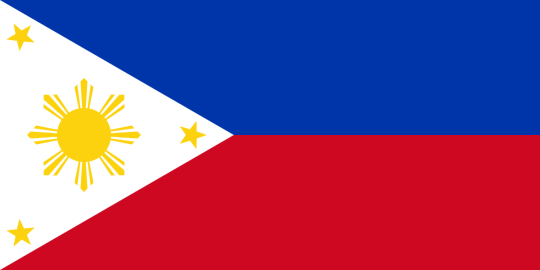
View On WordPress
#Asia#Blog#blogger#blogging#Carlo Carrasco#Commie#Commies#Communist#Communist Party of the Philippines (CPP)#diversity#geek#homosexual#Inclusion#Leftism#leftist#LGBT#LGBTQ#LGBTQIA+#liberal#Marxist#National Democratic Front (NDF)#National Task Force to End Local Communist Armed Conflict (NTF-ELCAC)#New People&039;s Army (NPA)#news#NO to Communism#NO to Leftism#NO to Marxism#Philippine News Agency (PNA)#Philippines#Philippines blog
0 notes
Text
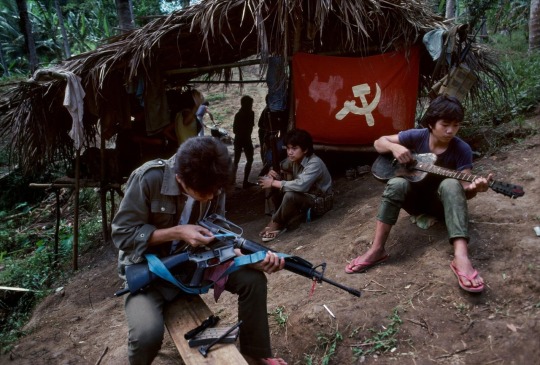
New People’s Army (NPA ) guerrilla camp in the mountains of Philippines, 1986.
71 notes
·
View notes
Text
Authorities will re-engage with the New People’s Army (NPA), the military wing of the Communist Party of the Philippines (CPP), for the first time in six years, both parties and facilitator Norway announced on Tuesday.
“The parties agree to a principled and peaceful resolution of the armed conflict,” the two sides said in a joint statement, adding that the peace talks will address “deep-rooted socioeconomic and political grievances”.
If negotiations succeed, the rebels will end their armed struggle and transform into a political movement, according to Norway, which has mediated the island nation’s peace process for around 20 years.
Despite the progress, the government announced no immediate ceasefire and said operations against the armed group would continue.
However, military chief Romeo Brawner was hopeful an eventual peace deal would enable the armed forces to fully focus on “external or territorial defence”, rather than domestic conflict.
28 Nov 23
62 notes
·
View notes
Text

March 21, 2024 | Ang Bayan
Desperate to “finish off” the revolutionary armed resistance of the Filipino people, the US-Marcos regime’s armed tentacles is carrying out a rampant terrorist and fascist rampage throughout the country. Marcos and the AFP are set to make one false declaration after another that provinces have become “insurgency-free,” especially in areas that have long been targets of foreign corporations for mining, plantation and energy projects. At the behest of US imperialism, the AFP is also in a hurry to “end” the armed struggle of the Filipino people so that the US military can fully employ the AFP in its war of provocation against China which is likely to intensify in the coming year.
Marcos and the leadership of the Armed Forces of the Philippines (AFP) have recently ordered an all-out war. The declared aim of this war is to dismantle all NPA guerrilla fronts by the end of March, destroy all NPA combat units by the end of June, and destroy all regional Party committees before the end of the year. Thousands of military troops, alongside police combat troops and tens of thousands of paramilitaries armed by the AFP, have been dispatched to ravage the countryside.
Hundreds of villages are being garrisoned by Marcos’ fascist minions. Oppressive soldiers are controlling people’s lives and livelihoods, silencing them and trampling on their rights and freedoms. Checkpoints and food blockades, prohibiting people from working in their fields or swidden farms, armed soldiers occupying barangay centers, going house to house and forcing people to “surrender,” harassing young women or even married women, all-night drinking, beatings and altercations, indiscriminate firing of guns—this is how people perceive the rotten soldiers. Amid drought and disasters, fascist soldiers are like pests who bring nothing but disaster to their communities.
Using powerful weapons such as drones and jetfighters, helicopters and howitzers, Marcos’s terrorist soldiers are bombing mountains and fields, indiscriminately firing night or day, destroying the forests and poisoning waters, shattering the peace and causing deep trauma to the people, especially children, pregnant women and the elderly. These result in unnecessary number of lives lost, contrary to all principles and laws of civilized warfare.
The evil aim of Marcos is to instill fear in the hearts of the people and force them prostrate while allowing their land to be grabbed by big foreign capitalists and their partner comprador bourgeoisie and big landlords. But instead of falling on the ground, the people are more and more roused to stand up and fight, and tread the path of armed revolution.
In the guerrilla fronts across the country, the units of the New People’s Army (NPA) continue to enjoy deep and widespread support from the peasant masses. Military officers of the AFP and the reactionary state are furious that despite their intensified all-out war which has lasted for almost seven years, the peasant masses continue to provide political and material support to the Red fighters. Young farmers, as well as young students, workers, as well as professionals continue to join the people’s army.
The people’s desire to carry forward the armed struggle continues to burn. Amid fascist attacks perpetrated by the armed minions of the US-Marcos regime, and oppressive policies that worsen their plight, it is becoming clearer to the minds and consciousness of the peasant masses that they completely have nothing if they do not have the New People’s Army on their side to defend their lives and rights, and to fight with for their land and livelihood.
In recent years, the NPA has suffered losses and setbacks in various parts of the country due to the errors and weaknesses of conservatism and complacency with its previous accomplishments. Instead of boldly treading the path of continuous expansion and invigoration of the armed struggle, the scope and mass base of guerrilla units were reduced, and units became passive and vulnerable to enemy encirclement. Under the guidance of and inspired by the Party, the NPA is determined to rectify errors and move forward on the path of strengthening and galvanizing the people’s war.
In the spirit of the rectification movement, the NPA must more vigorously wage armed struggle in all parts of the country. Utilizing the broad mass movement in guerrilla warfare, they must use all weapons—guns and rocks, spears and punji traps, shotguns and landmines—and carry out large or small tactical offensives that can be won against weak and isolated parts of the enemy. Strike at the enemy’s fascist troops and all its tentacles by way of rendering justice for the people and inspiring their resistance. Only by waging widespread armed resistance can the NPA consolidate, overcome setbacks and strengthen.
Since its establishment, five and a half decades ago, the NPA has served as the true people’s army in promoting the revolutionary aspirations of the Filipino people for national democracy. On its coming anniversary on March 29, let us celebrate its accomplishments for the past 55 years, pay tribute to all the martyrs and heroes, and reaffirm the determination to advance the protracted people’s war, without fear of sacrifices and hardships, to achieve ultimate victory in the future.
#revolution#maoism#communism#revolutionary#marxism leninism maoism#communist#maoist#marxism#mlm#the philippines#pw#ang bayan#cpp
31 notes
·
View notes
Text
On September 2nd, 2023, Jhed Tamano (22) and Jonila Castro (21) were volunteering helping fishing communities affected by Manila Bay development when they were allegedly grabbed in the street by four armed, masked men and forced into a grey SUV.
The Philippine National Police has publicly suggested that unnamed outside groups are responsible for the disappearances. Privately, they have accused the pair of being affiliated with the New People’s Army (NPA), a communist armed group.
Tamano and Castro had been volunteering with AKAP Ka Manila Bay, an advocacy group partnered with church organisations to oppose land reclamation projects on the shores of the bay, including the $15bn New Manila International Airport in Bulacan, near Castro’s hometown. Criticisms include destroying fishing waters and threatening the ecosystem, including mangrove forests that prevent flooding in low-lying Metro Manila, home to 26.7 million people.
Tamano is a graduate of Bulacan State University and Castro had paused her own studies to become a full-time volunteer. They were excellent students who believed “it is worth doing this and giving up some of [their] ambitions and dreams”. (x x)

Don't forget Jhed Tamano and Jonila Castro.
84 notes
·
View notes
Text
NEVER FORGET. NEVER AGAIN.

On the 21st of September 1972, 51 years ago, Proclamation 1081 was signed. This would become the deadly start of the Martial Law.
However, the masses only realized that it has started on the 23rd of September. How did this happen? An ambush against the then Minister of Defense, Juan Ponce Enrile on the 22nd of September.
The Marcos regime is anti-NPA, or New People's Army, sometimes called CPP-NPA (Communist Party of the Philippines - New People's Army)
Now, let's have some facts about the Martial Law.
1. 107,240 people are primary victims of the HRVs during Martial Law.
- 70,000 are arrested.
- 34,000 are tortured.
- 3,240 are killed by the military police.
2. 464 media outlets were closed
- 8 major English newspapers
- 18 vernacular, Spanish and English dailies
- 60 community newspapers.
- 66 TV channels (including ABS-CBN)
- 20 radio stations
- 292 provincial radio stations.
3. 11,103 of these people are victims of human rights violations.
- 2,326 were killed or disappeared.
- 238 were r*ped and forcibly abducted
- 217 were m*tilated, abused sexually, including minors.
- 1,467 were abused mentally, psychologically, emotionally.
- 182 were subjected to inhumane treatment
- 699 are in arbitrary detention (more than 6 months)
- 1,417 are detained between 15 days to 6 months
- 1,239 are detained from 36 hours up to 15 days
- 579 were in involuntary exile involving violence and illegal takeover of business
- 2,739 were in involuntary exile involving intimidation and physical injuries
This remains a dark stain in Philippine history. And with another Marcos on the high seat, we voice out: NEVER FORGET. NEVER AGAIN.
Sources:
Fast Facts: The Marcos martial law regime | Inquirer News
https://twitter.com/indiohistorian/status/1485997495587151877
#philippine history#philippines#politics#history#marcos regime#martial law#philippine politics#never forget#never again
44 notes
·
View notes
Text

NUPL Cebu Chapter on Twitter @nupl_cebu:
Press Release
Feb 25, 2024
The NUPL Cebu Chapter expresses its strongest condemnation over the killings of Hannah Jay Cesista and four other individuals, namely Domingo Compoc, Perlito Historia, Marlon Omosura, and Alberto Sancho in Bilar, Bohol, collectively known as Bilar 5.
An Iskolar ng Bayan, Hannah earned her Political Science degree from the UP Cebu. As a college student, she joined various organizations aligned with her principles and beliefs - Youth For Christ UP Cebu Chapter, Cebu Students for Justice and Peace, & Kabataan Partylist UP Cebu.
She then enrolled in the University of San Carlos (USC) to pursue a law degree. During her law school days, Hannah volunteered at NUPL Cebu and was instrumental in forming the law students’ arm of the Cebu Chapter.
NUPL Cebu members can attest to Hannah’s unwavering dedication and active involvement in the chapter’s activities in providing legal services to marginalized communities.
She was always the first person to volunteer when lawyers needed assistance in the countless legal work of the organization. She joined community visits for paralegal trainings & discussions on human rights despite the demands of law school. Hannah also passed the 2022 Bar Exams.
Numerous reports have circulated concerning an alleged “encounter” between the New People’s Army (NPA) and Philippine National Police (PNP) at Sitio Matin-ao 2, Barangay Campagao, Bilar, Bohol last February 23, 2024, Friday.
Contrary to law enforcement’s claims, initial reports received by NUPL Cebu show significant discrepancies and expose their possible commission of International Humanitarian Law (IHL) violations.
Several accounts support that no encounter has transpired. Instead, the five individuals were ordered to vacate the house where they were staying. The four men were forced to strip off their shirts. Along with Cesista, they were forced to roll in the mud.
The witnesses narrated that they were pleading with state forces to stop their inhumane acts but to no avail.
Killing Hannah and her companions is one of the many state-sanctioned efforts to harm activists, human rights workers, and dissenters- as part of their futile attempt to conceal the harsh realities of poverty and inequality in this country.
NUPL Cebu expresses its deepest condolences to the family and friends of Hannah. We call on the Philippine government to conduct a prompt and impartial investigation and to hold accountable the perpetrators responsible for the deaths of Bilar 5. Hustisya alang sa Bilar 5!
Long live Hannah Cesista! Long live Domingo Compoc! Long live Parlito Historia! Long live Marlon Omosura! Long live Alberto Sancho! Resume Peace Talks!
2024 Feb. 25
17 notes
·
View notes
Text
A Scenario which I think will happen if President Bong Bong Marcos (PBBM) doesn't change his current Foreign Policy towards the South China Sea (SCS) is the Philippines will eventually lose Ayungin Shoal in 2024, and the Philippines could retaliate by trying to cut off Economic Ties with China which will result in Hardships especially for the ordinary Filipino on the Street
#president bong bong marcos pbbm#south china sea scs#philippines#china#united states us#armed forces of the philippines afp#department of national defense dnd#pinklawans#enhanced defense cooperation agreement edca#taiwan#ayungin shoal#free trade agreement fta#south east asia sea#sabah#malaysia#new peoples army npa
0 notes
Text
I guess I want antifa to be institutional. I wanna see people black bagged on the street and taken away like the npa does in the cities to cops and informants. I wish we had a new people's army kind of set up.
14 notes
·
View notes
Text
Human Rights Watch: The acquittal last week of a former Army general for the 2006 abduction and torture of two brothers highlights the persistence of impunity for enforced disappearances in the Philippines.
Moments after the verdict, Raymond Manalo faced reporters outside the court in Bulacan province and wept openly. Manalo had alleged that he and his brother Reynaldo were kidnapped and tortured by then Maj. Gen. Jovito Palparan and his men in 2006. Manalo’s earlier testimony had helped convict Palparan in 2018 for the enforced disappearance, torture, and rape of students Karen Empeno and Sherlyn Cadapan in 2006. They remain missing. Palparan is serving a 40-year prison term.
The recent verdict came on the heels of a number of abductions of activists in locations throughout the country. On September 29, unidentified men took activists Lee Sudario and Norman Ortiz in Nueva Ecija province. On September 23, alleged soldiers seized activists Job Abednego David, Peter del Monte, and Alia Encela in Oriental Mindoro province; the military claims they were communist New People’s Army (NPA) rebels but has provided no information on their whereabouts. All five remain missing.
10 notes
·
View notes
Text

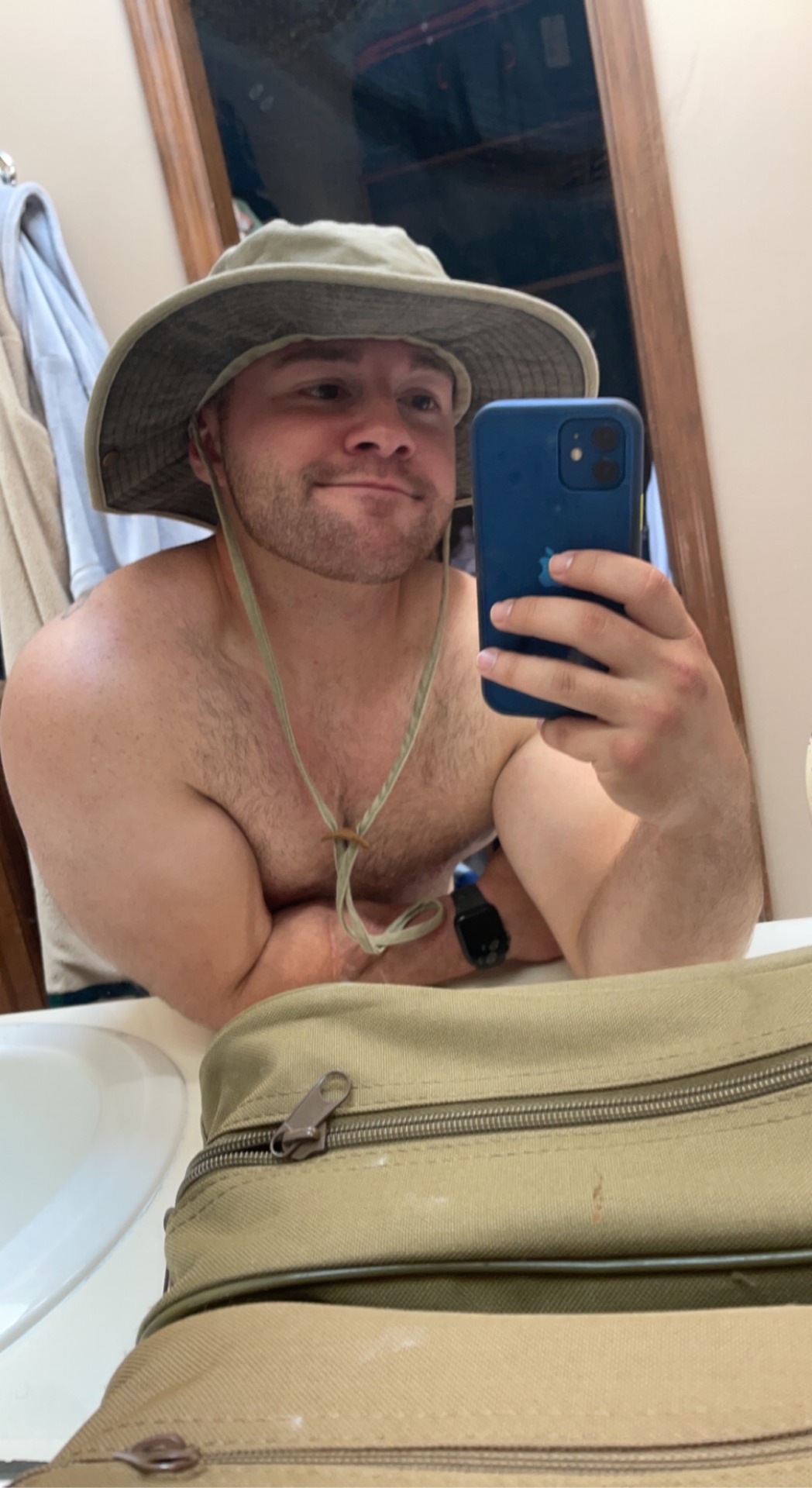
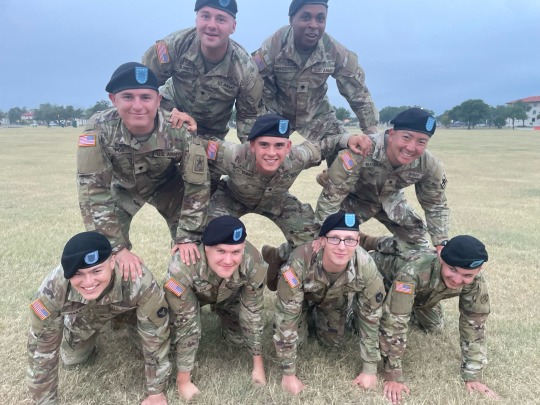

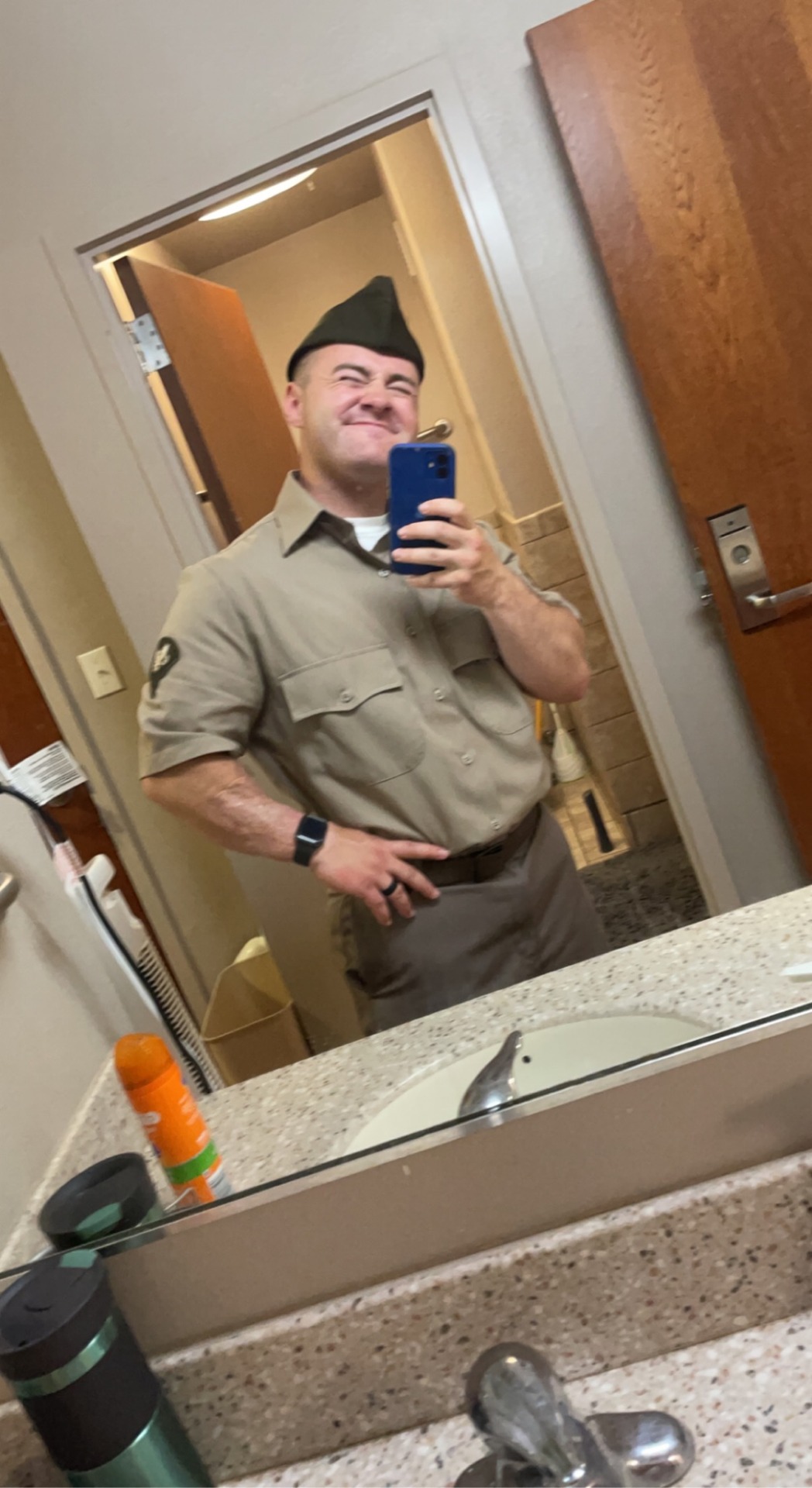
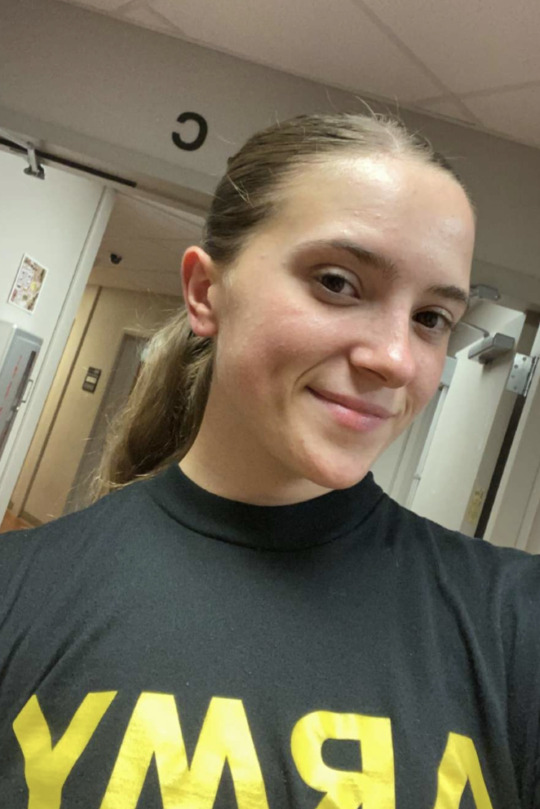
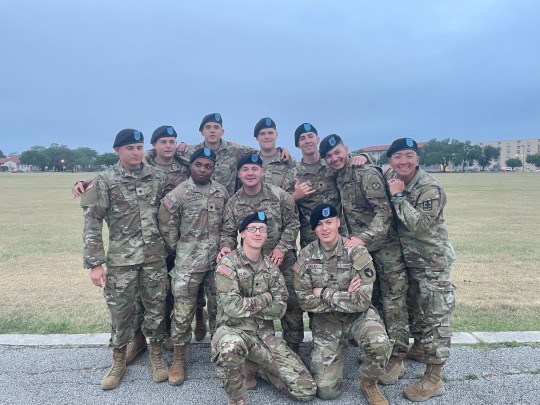
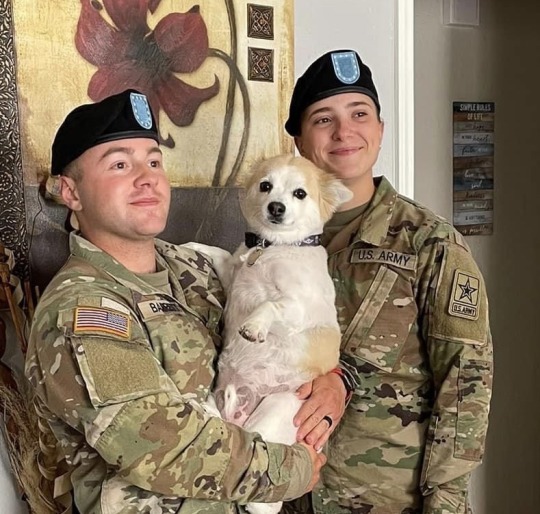

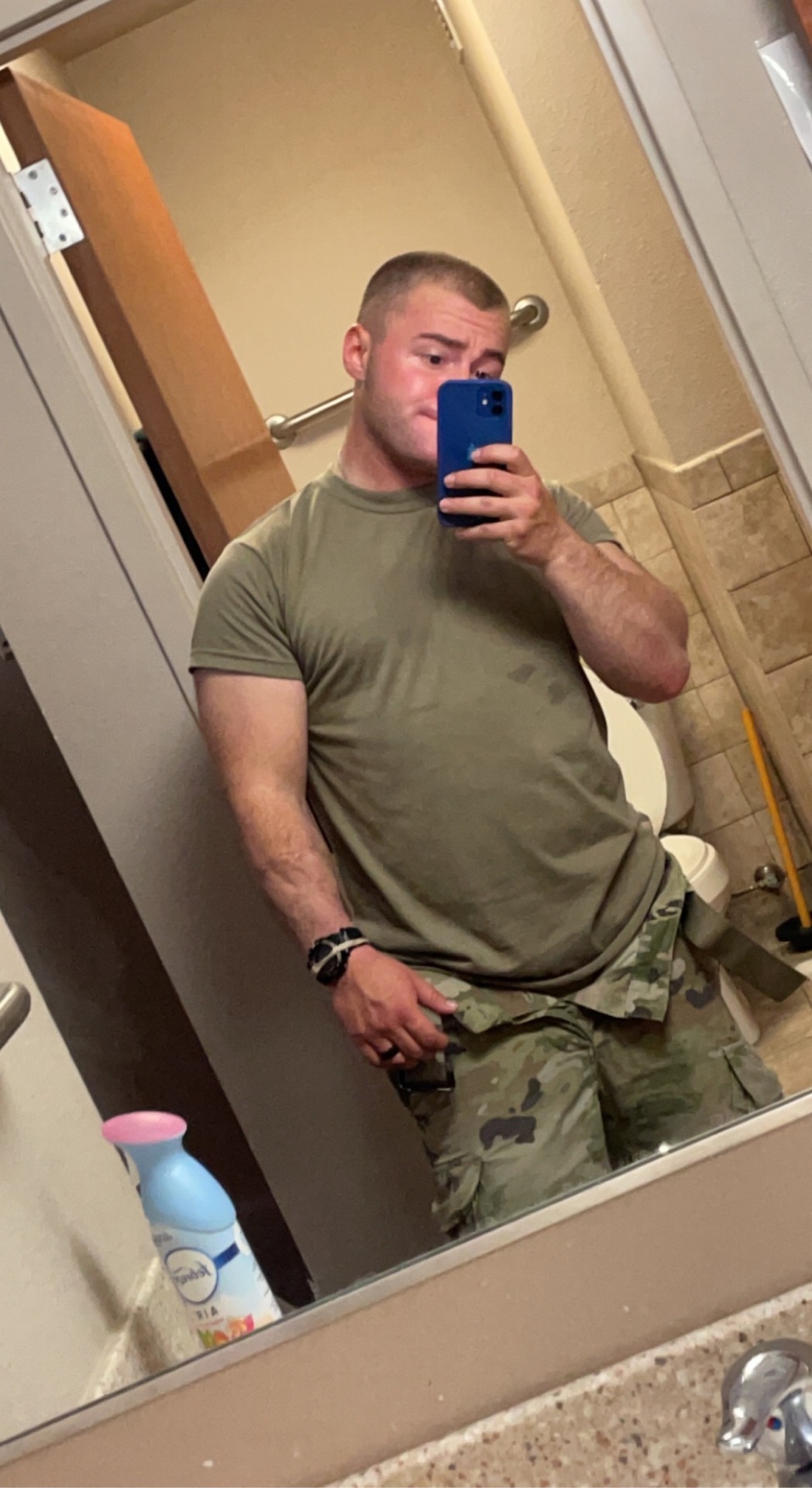
Well where have I been… it’s a doozy I enlisted in the army national guard as a 68W and obtained more then I ever expected. Lost more hair then I’m proud of and experienced baldness on a new level.
I first went to Ft Sill Oklahoma for basic training I remember quite fondly the cold and really that’s all I remember of that.
After Basic training I went through my AIT at Ft Sam Houston Texas where I recently returned from. The training is more then I ever expected from the occasional NPAs to the every hour IVs in your arm. From learning to do a Cricothyroidotomy to having a blood transfusion done on you. I met a lot of great people from the NCOs to the other soldiers I trained with. Never knew how bad the temperatures and humidity got in Texas till you’re spending everyday in full kit.
Most important I must say I was able to do all of this along side my smart, strong af and drop dead beautiful significant other from enlisting together to shipping together we were able to be there for each other and for that I could not have asked for a better choice to have taken.
Now back home I recently purchased a home, I’m going back to school starting next cycle to finish off my bachelors and enjoying the absolute luck of a life I have been following.
#ftm#ftm transition#testosterone#transgender#transguy#top surgery#transman#ftm transgender#transmale#ftm transguy#ftm transman#phalloplasty#transition#mastectomy#bottom surgery#ftm testosterone#hysterectomy#life update
113 notes
·
View notes
Text
Two CPP-NPA members charged for financing terrorism
Two members of the Communist Party of the Philippines/New People’s Army (CPP-NPA) were charged for financing terrorism and the Department of Justice (DOJ) claims it found compelling evidence against the suspects, according to a Philippine News Agency (PNA) news article.
To put things in perspective, posted below is an excerpt from the PNA news article. Some parts in boldface…
The Department of…

View On WordPress
#Asia#Blog#blogger#blogging#Carlo Carrasco#Communism#Communist#Communist Party of the Philippines (CPP)#Communists#crime#crime news#crime watch#Department of Justice (DOJ)#diversity#geek#Inclusion#Inspiration#Islam#Islamic terrorism#Islamo-Left#leftist#liberal#Marxist#New People&039;s Army (NPA)#news#NO to Communism#NO to terrorism#NO to terrorists#Philippine News Agency (PNA)#Philippines
0 notes
